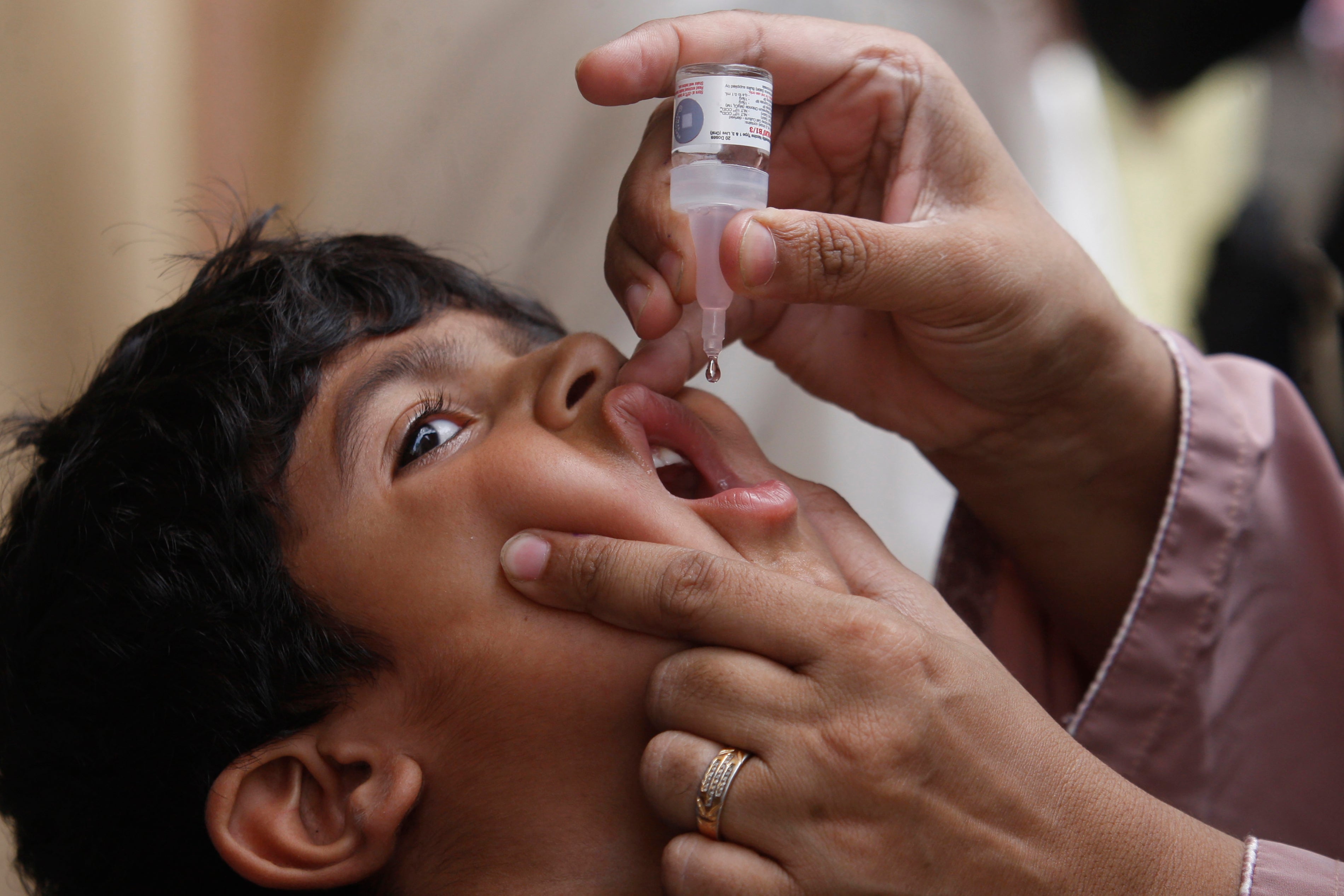Polio: Where have there been outbreaks recently?
Virus carries ‘continuous risk of international spread,’ WHO says

A national incident has been announced by health officials in England after poliovirus was discovered in sewage water.
Polio is a life-threatening disease caused by the poliovirus and is transmitted person to person, but can also be spread through food and faeces.
The virus was identified in sewage samples taken from London between February and May 2022, according to the UK Health Security Agency.
In the most severe cases, it can cause paralysis- but for most people who get infected, symptoms will feel flu-like.
According to World Health Organisation (WHO), there are three types of wild poliovirus. Two of these (WPV2 and WPV3) have been eradicated, while global efforts are still ongoing to take out WPV1.
In 2022, Polio is only recorded as an ongoing endemic in two countries: Pakistan and Afghanistan.
However, recent detection of wild polio outside of the endemic countries in Malawi “ demonstrates the continuous risk of international spread of the disease,” the WHO said.
Here are the countries that have suffered polio outbreaks in 2022:
Pakistan
June 2022 saw Pakistan’s wild polio cases spiking as eight cases were reported over the month in the North Waziristan district, bordering Afghanistan.
Prior to this outbreak, the country had 15 months of quiet on the polio front. The last time a child was paralysed was in January 2021.
The national eradication programme said that all children confirmed with polio belong to a region where there are “high refusal rates of finger-marking without vaccination during campaigns”.
Analysis by WHO stated that ongoing resistance to polio vaccines by some communities “still poses challenges, including some security issues with reports of attacks on police and soldiers” thereby increasing risk of the virus spreading.
Afghanistan
Only one case of wild polio has been detected so far in Afghanistan this year, while four were recorded in 2021- down from 56 cases in 2020.
In November 2021, WHO and UNICEF started a four-day polio vaccination drive in the country which targeted 9.9 million children aged below five.
Musa Joya (Kabul University of Medical Sciences, Kabul, Afghanistan) told The Lancet Microbe that children in Afghanistan are susceptible to becoming infected with poliovirus and spreading the disease due to a lack of access to clean water and to toilets equipped with soap and water.
He added that the “traditional, social, and economical behaviours of Afghans—[eg,] a large number of people living together, eating together, and sharing their food [from] one plate—increases the risk [of polio infection]”.
Malawi
On January 31 2022, the virus was detected in the southern African country after a child under five was infected.
The Global Polio Eradication Initiative (GPEI) said the case was “genetically” linked to the wild polio detected in Pakistan’s southern Sindh province in 2019.
Prior to this, the last clinically confirmed case of polio in Malawi was reported in 1992. This was also first case of wild poliovirus reported in the continent in more than five years.
On August 25 2020, the African region was certified as free of wild poliovirus.
The landmark declaration was attributed to the Kick Polio Out of Africa campaign, launched by Nelson Mandela in 1996 at a time when 75,000 children per year were paralysed by the virus.
However, the region is still battling with another form of polio called circulating vaccine-derived poliovirus (cVDPV).
CVDPV type 2 (cVDPV2) is most common with 959 cases occurring globally in 2020, threatening attempts to eradicate polio.
They are a rare, mutated version of the virus – typically found in under-immunised communities with poor sanitation – which derive from the live oral polio vaccine (OPV).
Currently, 29 countries in Africa are known to be infected with cVDPV2, but according to WHO, 12 now appear to have halted transmission.
Subscribe to Independent Premium to bookmark this article
Want to bookmark your favourite articles and stories to read or reference later? Start your Independent Premium subscription today.

Join our commenting forum
Join thought-provoking conversations, follow other Independent readers and see their replies